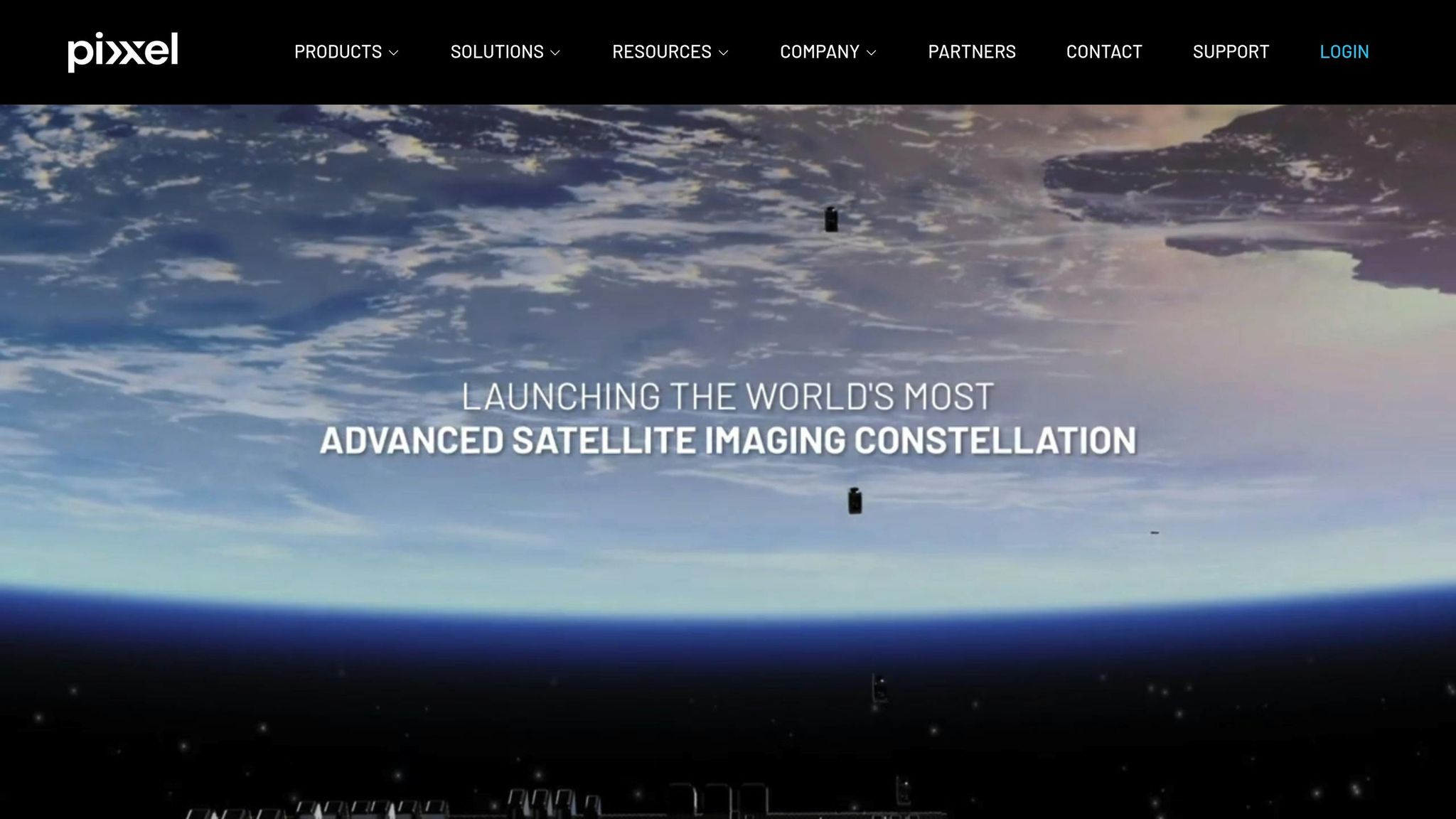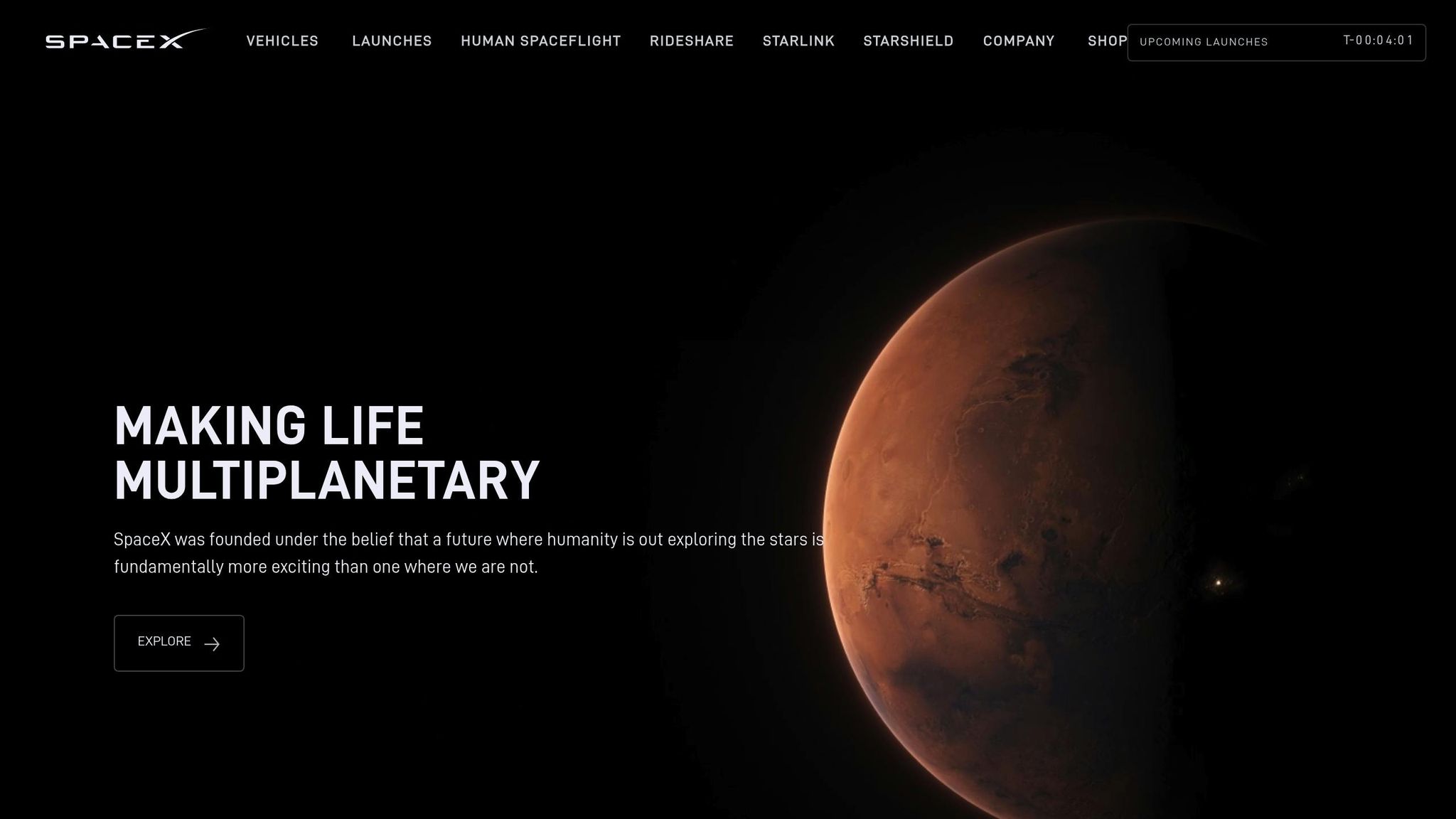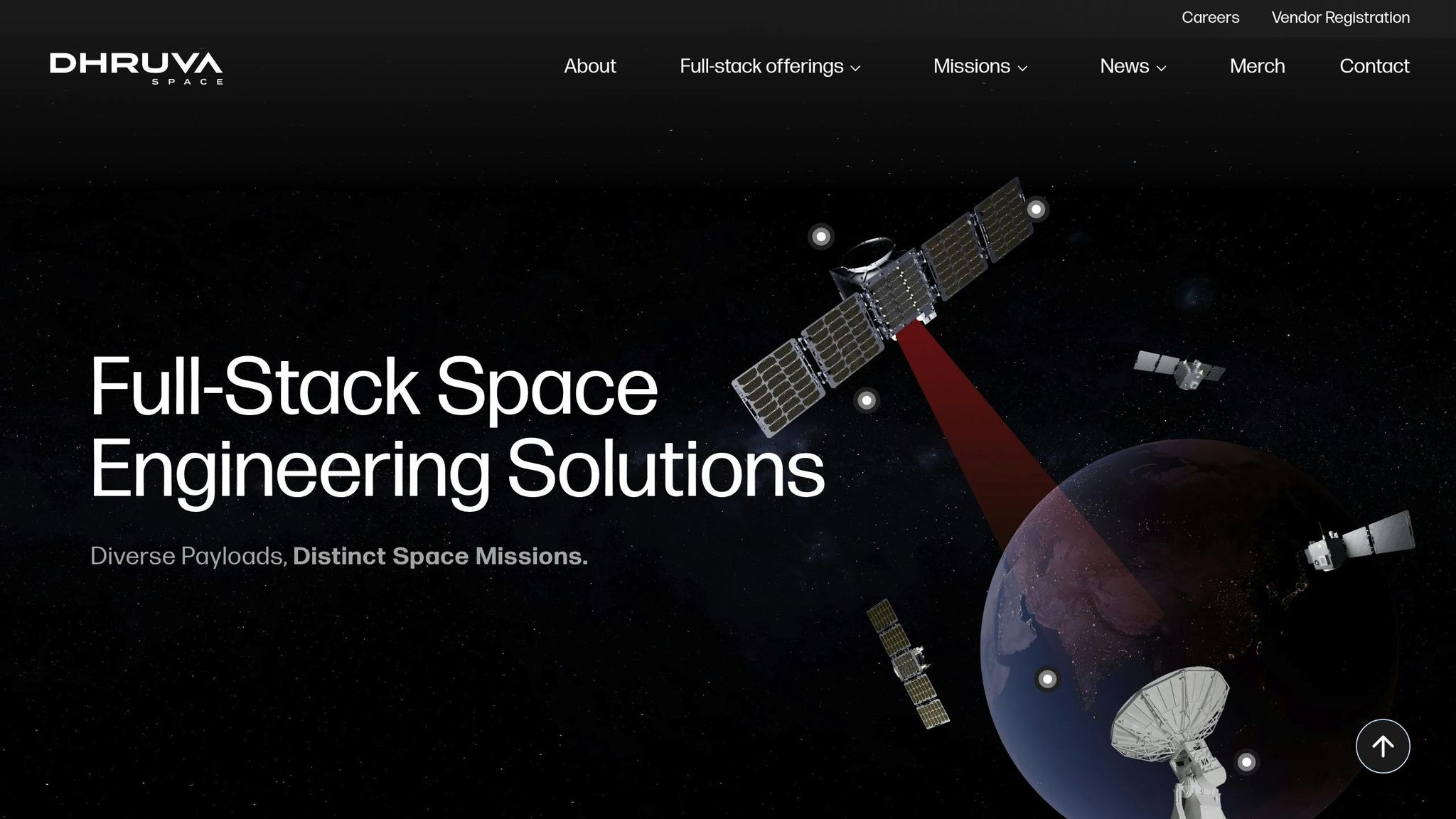Pixxel and Dhruva Space Launch Satellites via SpaceX Falcon 9
Explore how two innovative companies are advancing commercial space missions through unique satellite technologies and partnerships with a leading launch provider.

Pixxel and Dhruva Space recently launched satellites on SpaceX's Falcon 9 rocket, showcasing two distinct approaches to commercial space missions.
- Pixxel focuses on deploying hyperspectral satellites for Earth observation, offering applications in agriculture, resource management, and infrastructure analysis.
- Dhruva Space uses a hosted payload model, enabling smaller companies to test technologies in orbit. Their LEAP-1 mission validated the P-30 nanosatellite platform, carrying payloads for Australian firms.
Both companies benefit from SpaceX's reliable launches, strengthening its position in the small satellite market. These partnerships highlight the growing opportunities for private space ventures and SpaceX's role in catering to diverse client needs.
1. Pixxel

Mission Objectives
Pixxel is on a mission to revolutionize Earth observation by developing hyperspectral satellites capable of capturing incredibly detailed spectral data. These satellites aim to go beyond traditional imaging systems, offering insights into agriculture, resource management, and environmental changes. By creating a detailed database of Earth's surface, Pixxel is paving the way for new technological applications and unique payload opportunities.
Satellite Technologies
Pixxel's satellites are equipped with advanced hyperspectral imaging technology that spans a wide range of wavelengths. This allows them to analyze material compositions and chemical properties with precision. Designed to be compact and efficient, these satellites are built for cost-effective launches using commercial providers like SpaceX's Falcon 9.
Market Applications
The technology has practical uses across various industries. In agriculture, it helps optimize crop yields, spot pest infestations, and improve irrigation. Beyond farming, it supports environmental monitoring, mineral exploration, and infrastructure management by delivering deeper insights through its advanced imaging capabilities.
Impact on SpaceX

Pixxel's partnership with SpaceX highlights the growing collaboration between emerging space startups and established launch providers. By accommodating diverse payloads like those from Pixxel, SpaceX continues to solidify its role in enabling cutting-edge satellite missions and advancing the space industry.
2. Dhruva Space

Mission Objectives
Building on the momentum of Pixxel's groundbreaking initiatives, Dhruva Space is carving its own path in the commercial space industry. Its LEAP-1 mission signifies the company's first commercial venture using the P-30 satellite platform. The mission's primary goal is to validate the P-30 nanosatellite platform and its subsystems for commercial use, following their successful qualification during ISRO's PSLV-C58 POEM-3 mission in January 2024.
LEAP-1 launched on August 27, 2025, at 1:32 AM IST from Vandenberg Space Force Base in California, aboard a Falcon 9 rocket. The mission showcases Dhruva Space's full-stack capabilities by hosting two In-Orbit Demonstration (IOD) payloads for Australian companies: Akula Tech's Nexus-01, an advanced AI module, and Esper Satellites' Esperesso, a hyperspectral imager for OTR-2. This collaboration highlights the increasing role of emerging space companies in bolstering SpaceX's global appeal.
This mission is part of Dhruva Space's broader vision to become a global leader in full-stack space engineering solutions, offering integrated satellite, launch, and ground services. The partnership with Australian firms underscores the company's growing reach in international markets.
Satellite Technologies
At the heart of LEAP-1 is the P-30 satellite platform, a versatile system designed to carry payloads up to 33 lbs (15 kg), with a 12U volume and 50 watts of power. This standardized platform allows clients to focus exclusively on their payloads without the need to navigate the complexities of spacecraft development. The P-30 platform had already proven its reliability during ISRO's PSLV-C58 POEM-3 mission, making it a trusted choice for commercial operations.
Dhruva Space is scaling up its production capacity with a 280,000 square foot facility in India. This facility will enable the company to manufacture satellites weighing up to 1,100 lbs (500 kg), positioning Dhruva Space to meet the rising demand for commercial satellite services.
Market Applications
The LEAP program offers comprehensive services, from satellite bus development to launch coordination, streamlining deployment and cutting costs. This integrated model allows for shared mission economics, making space more accessible to newer companies. By hosting payloads for Akula Tech and Esper Satellites, LEAP-1 demonstrates how organizations can test technologies in orbit without needing their own dedicated platforms. This approach supports frequent satellite launches and highlights the expanding opportunities in the commercial space sector.
Impact on SpaceX
Dhruva Space's collaboration with SpaceX for the LEAP-1 mission underscores the growing global reliance on SpaceX's dependable launch services. By leveraging the Falcon 9, Dhruva Space not only validates its own capabilities but also strengthens SpaceX's reputation as the go-to launch provider for emerging space companies.
The successful deployment of LEAP-1 further cements SpaceX's role in advancing the small satellite market, enabling companies to develop and deploy next-generation space technologies. These achievements bolster investor confidence in SpaceX's expanding influence within the commercial satellite industry.
Advantages and Disadvantages
The satellite launches by Pixxel and Dhruva Space on SpaceX's Falcon 9 showcase two distinct approaches in the commercial space industry: Pixxel's dedicated constellation model and Dhruva Space's hosted payload strategy. These contrasting methods provide valuable insights into SpaceX's pre-IPO value proposition.
| Aspect | Pixxel Advantages | Pixxel Disadvantages | Dhruva Space Advantages | Dhruva Space Disadvantages |
|---|---|---|---|---|
| Business Model | Operates its own constellation of high-resolution hyperspectral Earth observation satellites. | Requires substantial investment for deployment and ongoing maintenance. | Offers end-to-end space engineering solutions, focusing on hosted payloads for flexible mission integration. | Faces challenges in coordinating complex integrated solutions. |
| Technology Focus | Utilizes advanced hyperspectral imaging for detailed Earth observation data. | Depends on market demand for specialized imaging services. | Simplifies access for smaller payloads through its hosted payload approach. | Offers less customization compared to dedicated satellite designs. |
| Market Position | Retains control over its satellite network, enhancing data quality and service reliability. | Relies on the timely and complete deployment of its constellation for success. | Expands market access by lowering barriers for new space companies through hosted payloads. | Relies on the effective integration and performance of hosted payloads. |
Impact on SpaceX Valuation
Pixxel's constellation strategy creates predictable launch demand, which is attractive to investors. Meanwhile, Dhruva Space's hosted payload model allows for a potentially higher frequency of launches. Together, these approaches diversify SpaceX's client base and mission requirements, boosting its pre-IPO investment appeal.
Technology Maturity and Scalability
The maturity and scalability of these technologies are crucial. Pixxel's hyperspectral imaging technology aims to transform Earth observation, though its success hinges on market adoption. Dhruva Space, with its hosted payload focus, offers a versatile, full-stack engineering approach that supports scalable satellite deployment. This combination of technological strategies strengthens SpaceX's ability to cater to both established and emerging markets.
Financial Implications for SpaceX
Pixxel's constellation model could generate higher per-launch revenue, while Dhruva Space's hosted payloads ensure a steady stream of launches. This balance enhances SpaceX's operational efficiency and diversifies its revenue streams, boosting its valuation prospects. Both strategies align with long-term investment goals, making SpaceX an attractive option for pre-IPO investors.
Conclusion
The recent satellite launches by Pixxel and Dhruva Space aboard SpaceX's Falcon 9 highlight the growing importance of partnerships in the commercial space industry. These collaborations showcase SpaceX's ability to cater to a wide range of clients while enhancing its appeal in the pre-IPO market.
Pixxel's focus on Earth observation and Dhruva Space's adaptable payload services bring variety to SpaceX's offerings. This diverse portfolio reduces dependency on any single client or mission type, creating a more balanced and resilient foundation for its expanding commercial operations.
By accommodating the needs of both established players and emerging innovators, SpaceX continues to demonstrate reliability and adaptability in the market. These achievements strengthen its reputation as a leader in the space launch sector.
From an investment perspective, these successful missions further solidify SpaceX's position, potentially increasing confidence in its growing commercial launch capabilities.
These collaborations underline the immense opportunities within private space ventures, with SpaceX's consistent performance driving long-term value for investors and partners alike.
FAQs
What makes Pixxel's hyperspectral satellites unique compared to traditional Earth observation satellites?
Pixxel's hyperspectral satellites are breaking new ground with their ability to capture images across hundreds of narrow spectral bands. This means they deliver a much higher spectral resolution compared to traditional Earth observation satellites. For instance, these satellites can identify tree species with an impressive accuracy of up to 90%, a stark improvement over the roughly 25% accuracy achieved by conventional systems.
This advanced imaging capability opens doors to a wide range of applications. From detecting water contaminants and pinpointing mineral deposits to tracking changes in vegetation, these satellites provide an unmatched level of precision. By delivering richer and more varied data, Pixxel's technology is reshaping industries like environmental monitoring, agriculture, and resource exploration, offering insights that simply weren't possible with older multispectral systems.
What benefits does Dhruva Space's hosted payload model provide for smaller companies testing new technologies in space?
Dhruva Space's hosted payload model provides a cost-effective and streamlined solution for smaller companies looking to test their technologies in orbit. Instead of dealing with the hefty expenses and technical hurdles of building and launching their own satellites, businesses can leverage this model to get their payloads into space.
This approach not only reduces entry barriers but also speeds up the deployment of experimental technologies. It enables companies to channel their energy into innovation rather than grappling with logistical complexities, opening up space exploration to a broader range of emerging players in the industry.
What do the collaborations between Pixxel, Dhruva Space, and SpaceX mean for the commercial space industry and SpaceX’s growth?
The partnerships between Pixxel, Dhruva Space, and SpaceX represent a major milestone for the commercial space industry. These collaborations underscore the rising influence of private Indian startups in the global satellite launch arena, bringing fresh energy and competition to the sector. By teaming up with smaller, emerging companies, SpaceX expands its customer base while reinforcing its status as a leader in the global launch services market.
For SpaceX, these partnerships do more than just boost revenue - they also emphasize its role in making space access more affordable and accessible. This solidifies SpaceX's position as a cornerstone of the growing private space ecosystem, making it even more attractive to investors and further cementing its dominance in the market.
Comments ()